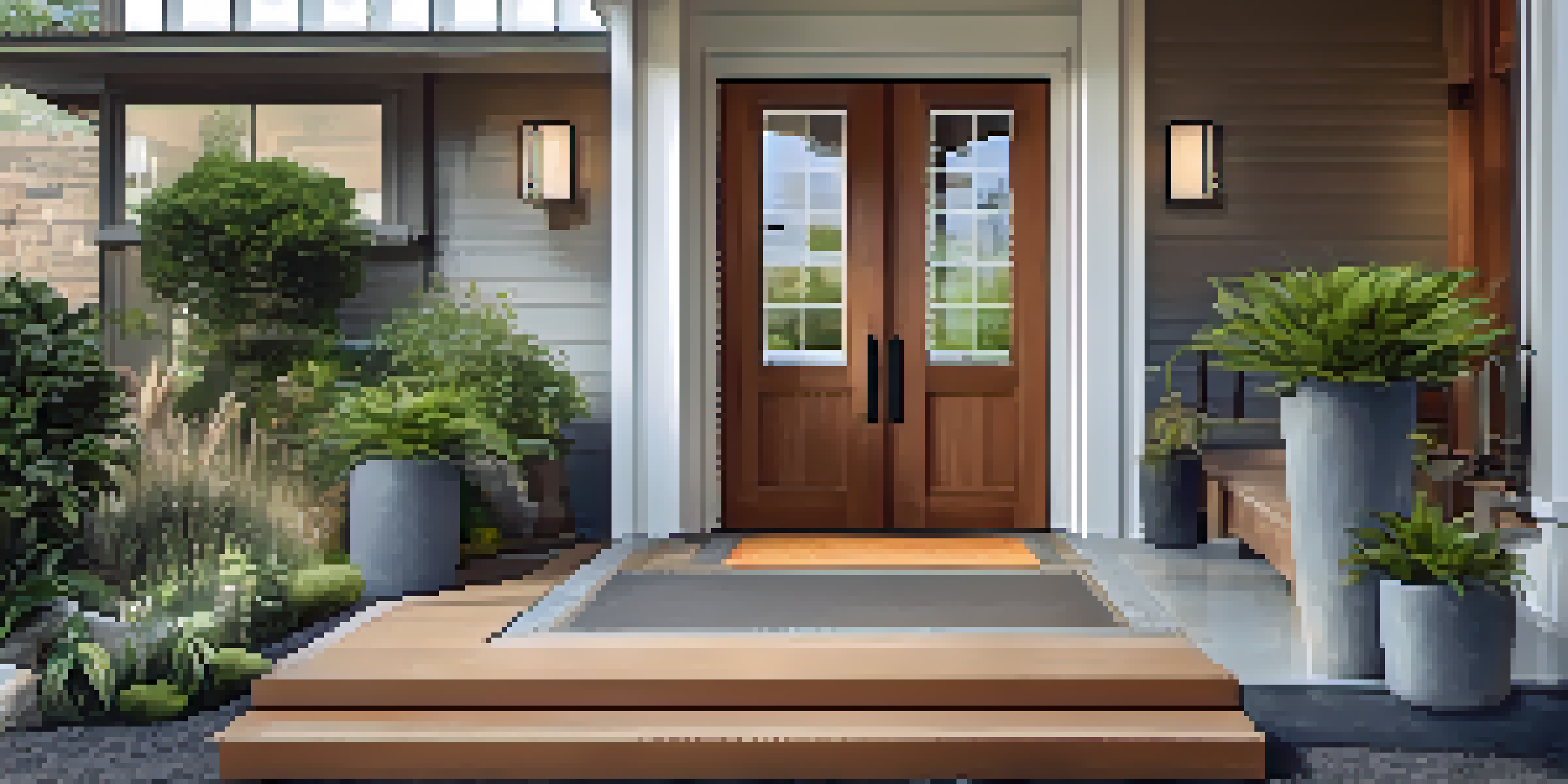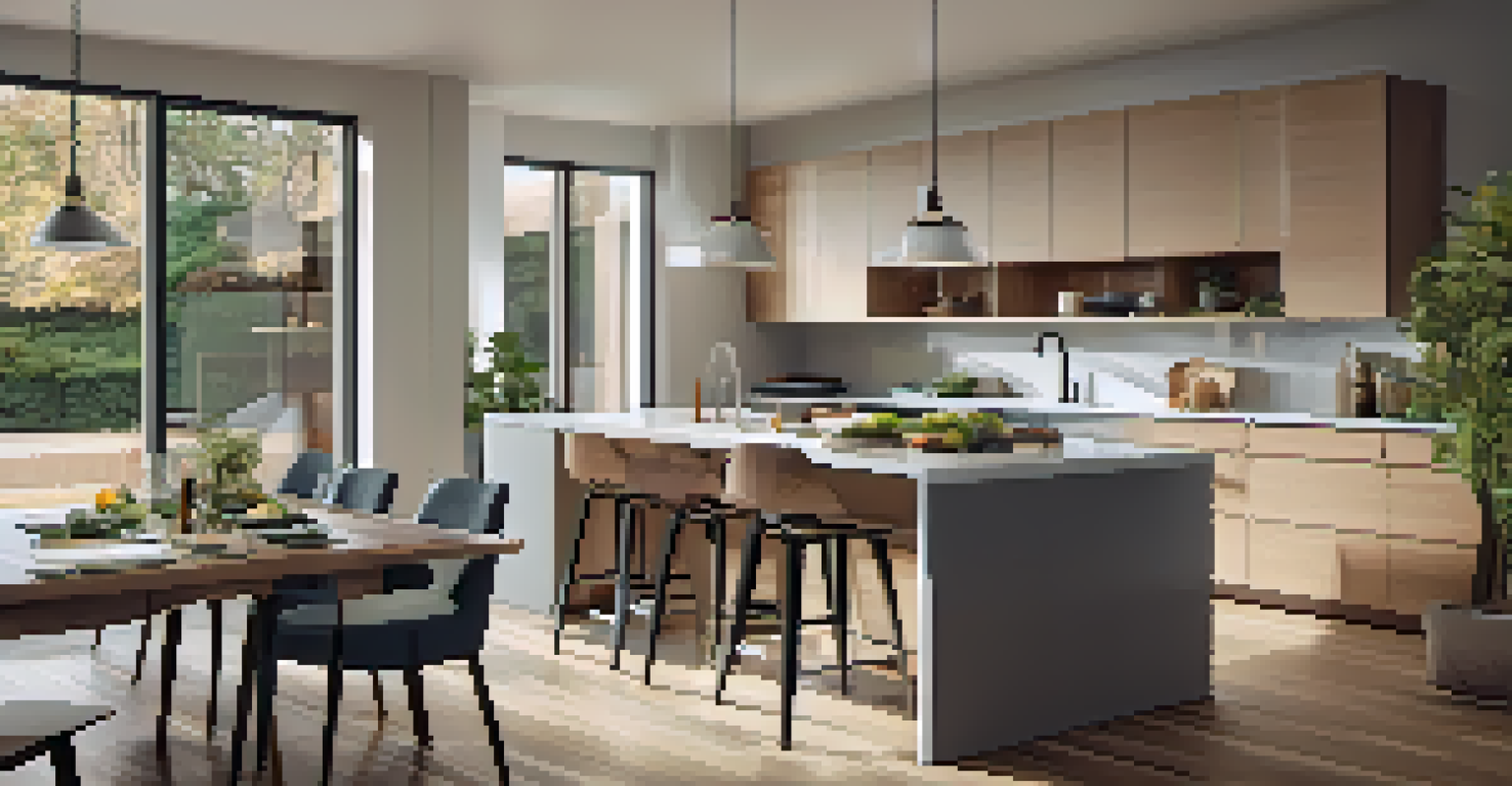How to Make Your Home More Accessible Through Renovation

Understanding the Importance of Home Accessibility
Home accessibility is crucial for fostering independence and comfort for everyone, especially those with disabilities or mobility challenges. Renovating your home to be more accessible can significantly improve the quality of life for residents and guests alike. It’s not just about adding ramps or grab bars; it’s about creating a space that feels welcoming and functional for all.
Accessibility allows us to tap into everyone’s potential.
Consider how often you have to navigate your home and the potential difficulties someone with limited mobility might face. For instance, a simple step at the entrance can become a barrier for those using wheelchairs or walkers. By understanding these challenges, you can approach renovations with empathy and insight.
Ultimately, making your home more accessible isn't just a necessity; it's an opportunity to create a more inclusive environment. Not only does it enhance safety and convenience, but it also reflects a commitment to caring for loved ones and fostering a supportive community.
Evaluating Your Current Space for Accessibility Needs
Before diving into renovations, take a thoughtful look around your home. Identify areas that may pose challenges, such as narrow hallways, high thresholds, or steep staircases. A simple walkthrough can reveal surprising obstacles that you may not have considered, which is essential for planning effective changes.

Involve family members or friends who may have different mobility needs in this evaluation process. Their insights can provide a fresh perspective on what improvements would make the most impact. Remember, accessibility is about meeting diverse needs, and having various viewpoints can lead to more comprehensive solutions.
Home Accessibility Enhances Independence
Creating an accessible home fosters independence and comfort for everyone, especially those with mobility challenges.
Document your findings and prioritize the areas that need attention most. By creating a list of required changes, you can streamline the renovation process and budget effectively. This organized approach will help ensure you address the most pressing accessibility issues first.
Incorporating Universal Design Principles in Renovations
Universal design is a philosophy that aims to create spaces usable by all people, regardless of age or ability. Incorporating these principles into your renovation plans can ensure your home is accessible now and into the future. Key features include open floor plans, wide doorways, and lever-style handles that are easier to use than traditional doorknobs.
The greatest disability is not having access to opportunities.
For example, consider installing a zero-step entrance, which makes it easier for everyone to enter your home without encountering stairs. Additionally, designing bathrooms with curbless showers and grab bars can enhance safety and comfort while reducing the risk of falls.
By embracing universal design, you're not just making your home accessible; you're also enhancing its overall functionality and aesthetic appeal. This approach encourages creativity and innovation, allowing you to create a space that is both beautiful and practical.
Choosing the Right Materials for Easy Maintenance
When renovating for accessibility, the materials you choose can make a significant difference in maintenance and usability. Opt for non-slip flooring, such as textured tiles or cork, to minimize the risk of falls. Additionally, consider using materials that are easy to clean, ensuring your home remains hygienic and welcoming.
For countertops and cabinets, select materials that are durable and can withstand wear and tear. Higher countertops might work for some, while lower ones are more accessible for those in wheelchairs. Choosing the right height and material can make cooking and other daily tasks much easier.
Universal Design Benefits Everyone
Incorporating universal design principles ensures your home is usable by all, enhancing functionality and aesthetic appeal.
Lastly, think about how materials affect the overall aesthetic of your home. Accessible design doesn’t mean compromising on style; instead, it offers the chance to select beautiful, functional materials that enhance both accessibility and visual appeal.
Enhancing Lighting for Safety and Comfort
Good lighting is a crucial element of accessible design. Proper illumination helps individuals navigate spaces safely, reducing the risk of accidents. Consider installing brighter lights in hallways, staircases, and entryways to improve visibility and comfort.
Incorporating smart lighting systems that can be controlled via mobile devices or voice commands adds an extra layer of convenience. This technology allows users to adjust lighting without needing to reach for switches, which is particularly beneficial for those with limited mobility.
Additionally, think about the placement of light switches and outlets. Installing them at accessible heights ensures everyone can reach them comfortably. By enhancing lighting in your home, you create a safer, more inviting environment for everyone.
Creating Accessible Outdoor Spaces
Outdoor spaces can be just as important as indoor areas when it comes to accessibility. Consider how your garden, patio, or porch can be modified to ensure everyone can enjoy the fresh air. Installing wide, even pathways and using non-slip materials can significantly improve outdoor mobility.
If you have steps leading to outdoor spaces, think about adding ramps that comply with accessibility standards. These ramps should have a gentle slope and sturdy handrails to support users safely. This way, everyone can access outdoor areas without concern.
Budgeting for Accessible Renovations
Effective budgeting and seeking grants can ease the financial burden of making necessary accessibility renovations.
Additionally, consider the accessibility of outdoor furniture. Opt for seating that is easy to get in and out of, such as chairs with armrests. By creating accessible outdoor spaces, you invite everyone to enjoy the beauty of your surroundings.
Budgeting for Accessibility Renovations
Renovating for accessibility can vary in cost, so it’s essential to budget wisely. Start by identifying which renovations are most critical for your needs and prioritize them based on budget and urgency. This approach allows you to tackle the most pressing issues first, making your home more accessible over time.
Research grants and resources that may be available for accessibility renovations. Many organizations offer financial assistance for homeowners looking to improve their living spaces for individuals with disabilities. Taking advantage of these resources can ease the financial burden and help you achieve your renovation goals.

Lastly, consult with professionals who specialize in accessible design. They can provide valuable insights into cost-effective solutions and help you avoid potential pitfalls. A well-planned budget will ensure that you can create an accessible home without overspending.